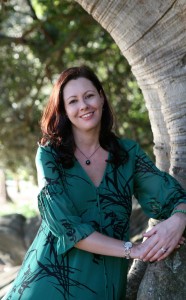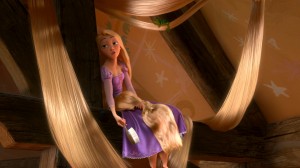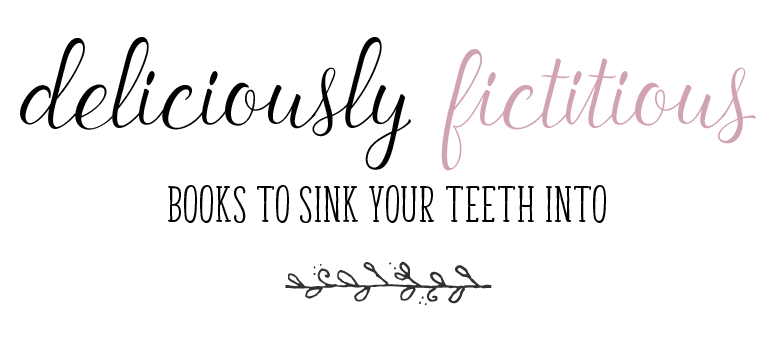
Image supplied by Random House.
Happy weekend everyone! I’ve got a treat for you today. I interviewed the delightful Kate Forsyth this week about her novel Bitter Greens and she’s come back with some brilliant, thoughtful answers you’ll love.
There aren’t really any spoilers – so feel free to go crazy whether or not you’ve read the book yet. (And I really do recommend it if you haven’t yet!)
Kate and I also have in common a liking for black cats, I’ve discovered. More on that later in a great segment I’m going to do regularly called “In the Hotseat” – off the cuff answers to some quirky questions I bet you never knew you wanted to know! Check it out right here. And if you’re an author/publisher/book blogger and want to be in the Hotseat, email me here!
Now onto Kate’s insights on Bitter Greens. I’ve tried not to duplicate the terrific questions I’ve seen in other interviews, which I’ve linked to at the bottom of this post if you’re keen to delve even further into the novel and its making. Enjoy!
Me: You’ve written three very strong women into your story. Was this a deliberate choice – to write a story about strong women in a time when it was a man’s world, or was this just the way the story evolved organically along the way? Were you tempted to include a man’s perspective or was this always to be a woman’s tale?
Kate: I didn’t set out to write a story about strong women, as such – I set out to write a retelling of Rapunzel, and discovered the rest of the story along the way. However, it’s impossible to write a book set in 16th and 17th century Europe without having to engage with the powerlessness of women at that time, and so somehow it did become a dominant theme in the book. I would never EVER begin writing a novel based on a “theme”– for me, the story is always paramount.
Read full answer »
Me: You’ve written a lot of fantasy in the past. But while Bitter Greens has fantastical elements it’s not a fantasy book and you’ve said you deliberately sought not to write it as fantasy. Why was that?

Image from Disney’s ‘Tangled’.
Kate: Half my novels are historical fiction, with a twist of the uncanny in them, and the other half are fantasy novels that are deeply rooted in history, and yet people insist on calling me a fantasy writer. This doesn’t concern me – I write the books I want to write and then people find a box to put them in. The source-wells of inspiration for me are old tales and old beliefs – history, folklore, fairytale and superstitions – and so all my books draw upon the past for energy and meaning and motif.
For me, the story determines its own shape. I always knew that I was going to write my Rapunzel retelling as a historical novel, as if it had really happened, as if it was true. This is because the “far, far away and long, long ago” effect of most fairytale retellings can remove a lot of the charge of terror and despair for the reader. Rapunzel is a story about a girl who is stolen and locked away in a small space for the years in which she grows from a child to a woman. This still happens, and when a young woman nowadays somehow manages to escape such captivity we are rightly horrified. Yet most illustrations for Rapunzel show a smiling young woman singing and combing her hair in a small tower hung with roses. I wanted to show what it would truly be like to be locked way in that tower, and what resources of courage and strength one would need to escape. I also wanted to remind readers that this kind of cruel incarceration has happened to women all throughout the history of the world.
I was also interested in the history of the tale – who told it, when, and why. When I discovered one of the first versions of the tale was told by a Neapolitan soldier in service to the Republic of Venice in the early 16th century, I knew at once I was going to set the book there and then. Renaissance Venice was utterly perfect for my intentions.
Read full answer »
Me: I loved the title for this book. Did you always know that it was going to be called “Bitter Greens” and how did you decide on the title?
Kate: I can’t write a novel until I have a title for it, and I often spend a dreadfully long time trying to think of a good one. Bitter Greens was one of those strokes of brilliance that come from nowhere sometimes, and are such a gift from the universe. As soon as it popped into my head, I knew it was perfect.
Me: You were retelling a very old, well known story in this book which has been retold many times. How did your predecessors’ approaches affect your own retelling? Did you deliberately avoid what others had done, or deliberately build on it, perhaps? Or did you just create your story without paying too much heed either way to what had gone before?
Kate: I’m interested in how and why retellers of tales change a story (so interested I’m actually doing my doctorate on the subject now). I find it fascinating how stories change over time, and yet, perhaps, the essential truth of the story endures. So I had spent a great deal of time studying every single different version there is of the “Maiden in the Tower” tale. I used what details appealed to me.
For example, there is a Sicilian version called Fair Angiola in which the mother steals jujubes (red dates) from a witch’s garden and, in return for her life being spared, promises to give up her daughter when she turns seven. Three times the witch comes to see Angiola, and on the third visit, bites off the top of her finger. This is a detail I used in Bitter Greens.
Similarly, in the version told by Giambattista Basile (the Neapolitan soldier), his heroine escaped the tower and used three magic objects to overcome the witch; a detail which is repeated in Anthousa the Fair with Golden Hair, a Greek version of the tale. So I also used the motif of the three magical objects as well. I basically used what I liked to add surprise and suspense to the book, while still honouring the tellers of the tale who came before me.
Read full answer »
Me: Without giving anything away, there’s a very powerful scene at one point in the book, during La Strega’s story. How hard was it to write that scene? How difficult do you find it to do bad things to good characters in your books?
Kate: That was a very difficult scene to write. I had known for a long time that I was going to include the scene in the book, because it was both historically true, and would help explain what drove La Strega to do the terrible things that she does. However, I dreaded writing it. I knew it would creep into my own dreams and darken my own days. Everything I write does. And so I left the writing of La Strega’s section till the very end. When I came to it, I went for a long walk by the ocean that morning, preparing myself for the day ahead. While I was writing it, I had to get up several times and walk outside and take a few deep breaths. I literally had to force my limbs to take me back inside my study, sit down, and begin writing again. I have a very visual imagination. I can’t write a scene till I “see” it in my mind’s eye; till I am experiencing it in my imagination. So I can get very shaken and upset by what I write. That was one of those scenes.
Me: You often hear writers say that their characters take on a life of their own and surprise them by doing something or saying something the author never intended. Did this happen to you when you wrote Bitter Greens and can you give an example of such an instance? How did this affect your story?
Kate: People are always curious about this, and yet it can be difficult to explain to someone who isn’t a writer themself. On the one hand, I am the creator of the story. I know that. I make the story up, I write it down, and so therefore I should be the one making the puppets dance. However, the reality is that stories are born deep within the deepest and darkest recesses of our brains; the shadowy, mysterious, hidden parts that we scarcely know are there ourselves. We think we are shaping the story, but sometimes the story is shaping us. In the early stages of a novel I think about it all the time, I daydream about it constantly, and stray ideas and images float through my imagination.
When I feel that surge of excitement, of “rightness”, I know I have found something that is important somehow. I often don’t know why. Buy I trust my creative instinct. The story seems to swim up out of my unconscious. I call this daydreaming the story to life. I read, I research, I study, I ask myself questions, I jot down notes and ideas, and gradually the backbone of the story takes shape.
I don’t begin writing until I have a strong sense of who my characters are, how they speak and move and think and deal with the world. Even so, the early stages are always slow and difficult. At some point though, the characters come to life in my imagination. I don’t need to think about what they’ll say, I just write it down as they say it. I call this the “quickening”. It’s always tremendously exciting. I know the novel will work now. After that I generally write quickly and fluidly. Sometimes my characters make me laugh out loud, sometimes I get choked with tears, sometimes they exasperate me. I always have the shape of the story in my mind’s eye, so my characters don’t exactly seize control. However, they constantly surprise me.
And in every single novel I have ever written, there have been one, or two – or several – spooky serendipitous discoveries that make the hair rise on my arms and make me wonder uneasily if I lie to myself about thinking I create this story. Perhaps the story always somehow existed and simply chose me to be its conduit …
While writing Bitter Greens, I went to my library looking for a book on art to help my son with a school project. When I pulled the book I wanted off the shelf, a book of Titian’s paintings that my grandmother had given me as a child fell out with it. I opened it, in idle curiosity, and it fell open to the painting A Woman at Her Mirror, with the story of the mysterious muse that Titian painted again and again over the course of his extraordinarily long life. It was like being hit with a bolt of lightning. I saw at once how I could use it in the novel – in fact, how it brought the disparate parts of the novel together in a way I couldn’t have just made up. That book on Titian had been on my bookshelf since I was 11 or 12; I had forgotten I had it. Yet I found it at just the right moment in the writing of the novel.
Read full answer »

Me: Charlotte-Rose was a real woman. How constrained by her history were you in the novel? Did the facts simply fuel your own imaginings or did you find they sometimes got in the way of what you wanted to do with her story?
Kate: I used the known facts of her life as the pegs around which I wove my fancy. Luckily for me, her life was so extraordinary that it was a gift for a novelist. I couldn’t possibly have made up the part where she dressed up as a dancing bear to gain access to her lover. That was her own particular genius.
Me: You’ve now had more than 20 books published; your first when you were 30. Has your writing method changed during this time? What things do you do differently now when you’re planning and writing a book, and why?
Kate: I’d like to say that I have mastered the art of writing a novel by now, but the truth is every book is different and throws up different problems and challenges along the way. The main difference now is that I have faith that I’ll be able to solve those problems, whether it’s by an idea swimming up out of my subconscious and into my mind, or a book falling out of a library shelf and bringing itself to my attention, just when I really need it. I tend to plan my novels more now, before I start writing, because I don’t have the luxury to make mistakes and write long sections that will later need to be cut because they are a distraction from the story.
Don’t forget to click here to read Kate’s responses “In the Hotseat”!
~ DF
Liked that? Here are some more great interviews about Bitter Greens:
- Novelist Juliet Marillier’s interview on Writer Unboxed – part one is here, and part two is here
- Sarah Johnson’s interview at Reading the Past – here – gives some great insights into the novel’s structure and themes
- Jon Page at Fan the Pages asks Kate about why she wrote the story for adults not children, among other things, right here
- John Purcell has done an insightful interview just here on the Booktopia Blog which focuses on Kate’s life and writing more generally
- Kate Forsyth’s own website has some great info, including a whole article on the music referenced in the novel, here

Pingback: Booklover Bites - Kate Forsyth, Science Fiction and Book Cover Art
Loved reading this interview, the author is amazing. This book is already on my TBR pile, and I can’t wait to get to it.
Glad you liked the interview Tracey! It was great of Kate to spend so much time giving such considered and revealing responses to these questions. Pretty inspirational stuff! ~DF